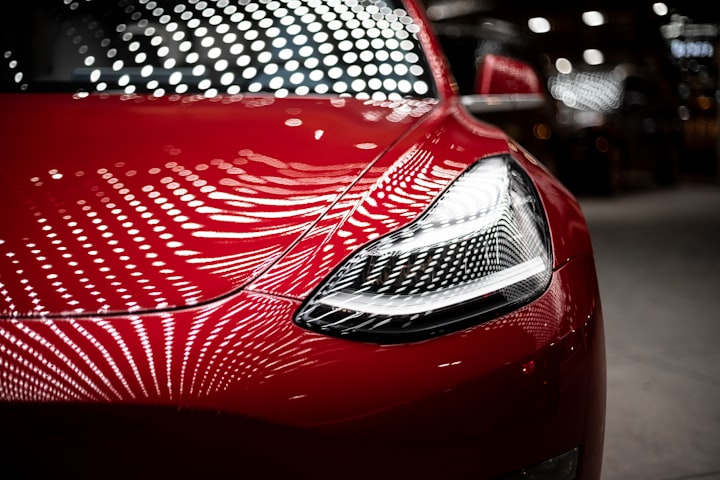How Do Heaters Work in Tesla’s?
The Difference Comes Down To The Engine

Traditional cars use combustion engines to not only power the vehicle but also to heat the cabin of the vehicle. Heat generated from the engine makes it possible to have a warm, cozy interior during colder weather.
How does an internal combustion engine work in a traditional car?
Internal combustion engines are able to propel a car because it is a heat engine. By using burning gasoline which fuels a traditional car, it creates torque. Torque is then applied to the wheels to make the car move.
A traditional car engine also contains cylinders that contain pistons, anywhere from 2–12 cylinders are in your typical internal combustion engine vehicle. These pistons then move up and down which turns the engine’s crankshaft that moves the engine’s wheels.
The pistons are powered by essentially miniature explosions caused from the heating of the gasoline. While powerful, these explosions are not especially efficient. Around one-third of the heat created by an internal combustion engine is essentially “lost heat” which is then filtered to the vehicle’s coolant system.
Lost heat in traditional vehicles is then used to power the heating system which keeps the vehicle cabin warm during colder months through the use of the heater.
How The Heater Works In A Traditional Combustion Engine Car
The heater in a traditional combustion engine car has two functions:
Heats the car cabin
Keeps the car engine cool
The heat created by the engine has to go somewhere in order to prevent the engine from overheating. A portion of the heat is removed through the vehicle exhaust system. The remaining heat is used to provide warmth to the vehicle cabin.
The Heating System In A Traditional Car Works Something Like This
Inside the vehicle’s cooling system, there are some main parts: water pump, thermostat, radiator, and coolant.
Some of the heat created by the engine goes through the vehicle’s HVAC system in particular the coolant. The coolant moves from the radiator to the heater core. The heater core begins to warm and then can blow heated air into the vehicle cabin.
How Do Tesla Engines Differ From Traditional Cars?
A Tesla does not have a traditional combustion engine. Instead, Tesla has an electric motor and a battery. Additionally, the electric motor you will find in a Tesla has far fewer parts to deal with.
Instead of the mini-explosions created by gasoline in a combustion engine, Tesla has a system of electromagnets that power the vehicle. Due to the lack of gasoline usage, because Tesla’s are powered through an electrical system, there is no excess heat created through the simple act of just running the car engine as one sees in a traditional car with a combustion engine.
So How Does The Heater In A Tesla Work?
While the explanation for how combustion engine vehicles are heated is quite complex and involved, the heating of a Tesla is fairly straightforward and simple in comparison.
The heater matrix found in combustion engines is replaced in the Tesla’s by a heater that is powered through electricity. How much electricity? Approximately 400 Volts.
One concern in using an electric heater is in zapping the engine’s battery (also known as the Energy Storage System) power unnecessarily. In order to prevent that from occurring, Tesla uses a device called a Positive Temperature Coefficient heater or PTC for short.
The Positive Temperature Coefficient heater uses a resistance system that as the heat increases, limits the current that can be drawn from the Energy Storage System.
Another challenge in heating a Tesla using the electrical system is it is necessary to keep the Energy Storage System cool while using the heater and while operating the Tesla.
The Energy Storage System is cooled through its own circuit of coolant which utilizes a pump. This pump moves water and a glycol antifreeze mixture around the Energy Storage System and into a separate compartment that is located just behind the passenger door.
This cooling system also distributes heat through cells which allow for a consistent heating and cooling experience throughout the vehicle cabin whereas in traditional combustion engine vehicles the cabin can range in the perception of heat or cool based upon where someone is sitting in the cabin.
Another Unique Feature of Tesla’s
In a traditional combustion engine vehicle, one only needs to worry about overheating the engine while the vehicle is in use like when you are driving the vehicle or the vehicle is idling.
Tesla’s differ in that their engines must be kept cool while driving or idling but also when the car Energy Storage System is charging.
A Tesla can safely be driven in up to -4 degree Fahrenheit temperatures but can only charge in 32 degrees Fahrenheit temperatures. In order to allow charging during colder temperatures, there is a heater in the Energy Storage System’s coolant circuit that only works while the vehicle is being charged.
How Does Cold Weather Affect The Battery of a Tesla?
Batteries have what is referred to as an ideal operating temperature. Colder temperatures will cause a battery to lose it’s power more quickly than in warmer temperatures. Additionally colder temperatures reduce the power output of a battery and can potentially shorten the life of a battery.
As stated earlier, Tesla’s have a heater that helps keep the battery or Energy Storage System warm to help combat the challenges of operating an electric vehicle during cooler temperatures, but because this heater is being used to warm the battery instead of powering the vehicle it can cause more battery energy to be depleted at a faster rate than in warmer temperatures.
Things To Be Aware Of While Driving A Tesla in Cooler Temperatures
Most Tesla’s, depending on the model, can go anywhere from 300 to 400 miles on a full battery charge before needing to visit the local charging station. In winter months, however, that range can be reduced by almost 40 percent, making the average range of a full battery charge during the winter 180–240 miles. While that reduction in range is not likely to affect your daily commute, it is something to take note of when planning on longer trips, particularly during cooler weather months.
One way to combat the loss of range is to go ahead and run your Tesla while charging and running the heat while it is still plugged into the power supply. This act is called preconditioning and it allows your cabin to be heated before unplugging from the power source and can assist in limiting the loss of battery range during cold weather.
In Closing
A Tesla motor is by far more efficient and contains fewer parts than a traditional combustion engine which results in less wasted energy (and gasoline) to power the vehicle as well as heat the vehicle. At the same time, this causes the Tesla to have to utilize alternative sources of heating to keep the cabin warm and the engine cool which in turn, affects how far you can drive the car on a full charge (a reduction at times of nearly 40 percent). This drop-in range during cooler weather can be reduced by preconditioning the car which includes turning the car on while plugged into an energy source and running the heater to allow the cabin to warm up. This simple act of preconditioning will eliminate some of the energy pull to heat the vehicle as it will only be necessary to keep the temperature in the cabin consistent rather than raise it.






Comments
There are no comments for this story
Be the first to respond and start the conversation.